Sponsored by

Build data-driven Trust with Prospects & Customers
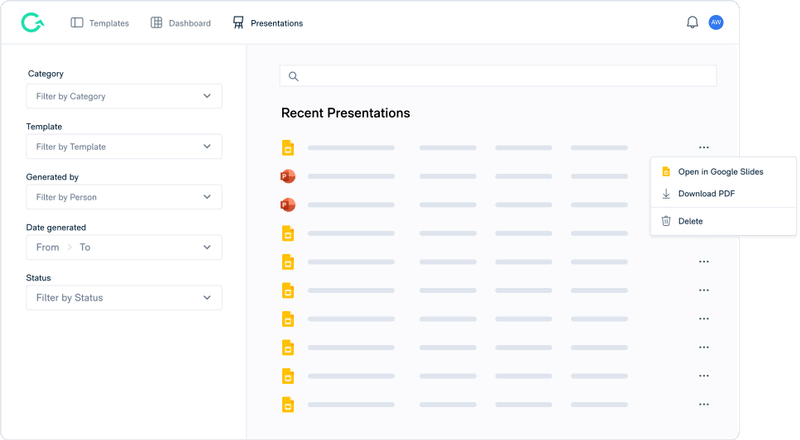
Matik automates the personalization of Google Slides & Powerpoint decks, including data-driven tables & charts. You can even send them as email attachment on autopilot! Great for QBRs, monthly check-ins, renewal decks, and ROI slides/one-pagers.
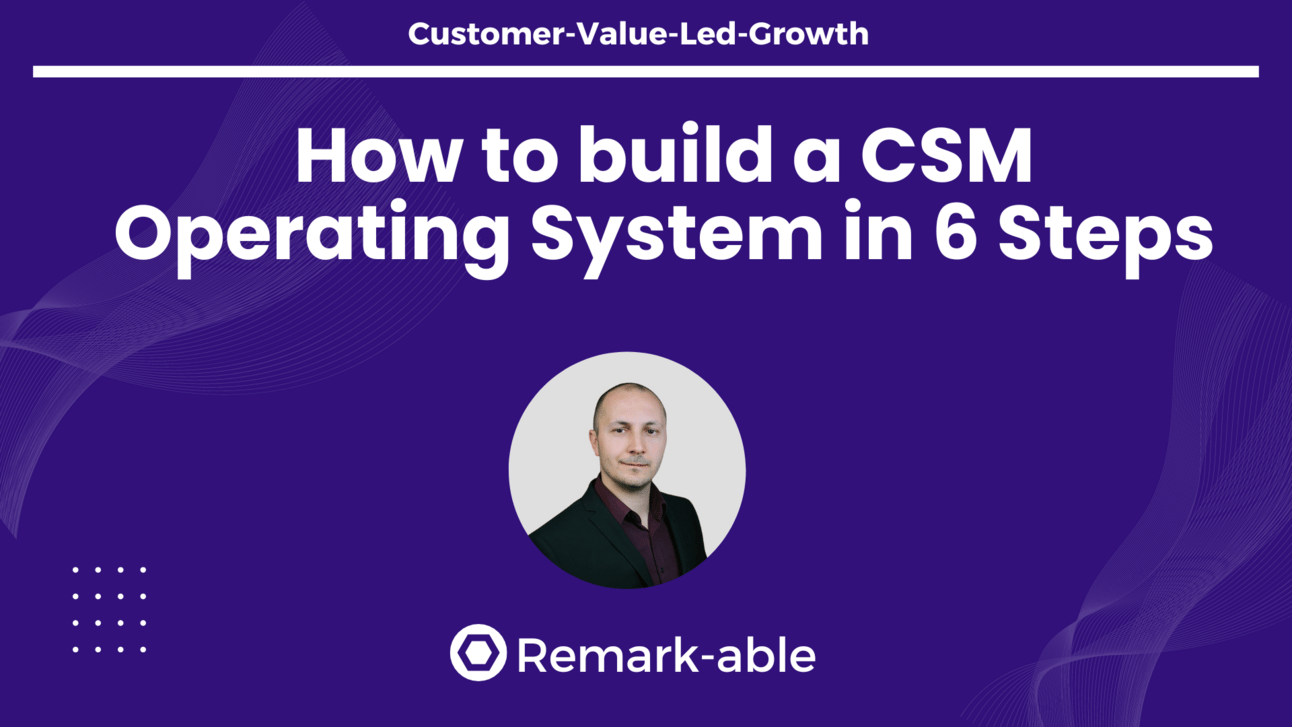
Hi, Markus here. Welcome to a free edition of the Customer-Value-Led-Growth Newsletter.
Every week, I share strategies, guides, and frameworks to help you create exceptional value for your customers and company.
Have you ever wondered why you are
spending so much time doing reactive work
plugging holes and fixing issues without a chance to be strategic
working so many hours for mediocre results
without things ever getting better?
After studying and dissecting the work of roughly 300 CSMs I have found a common pattern:
They have a random mix of tactics, playbooks, activities and tools in place.
What they don’t have is an operating system that works accurately and repeatedly.
Here’s how to build one:
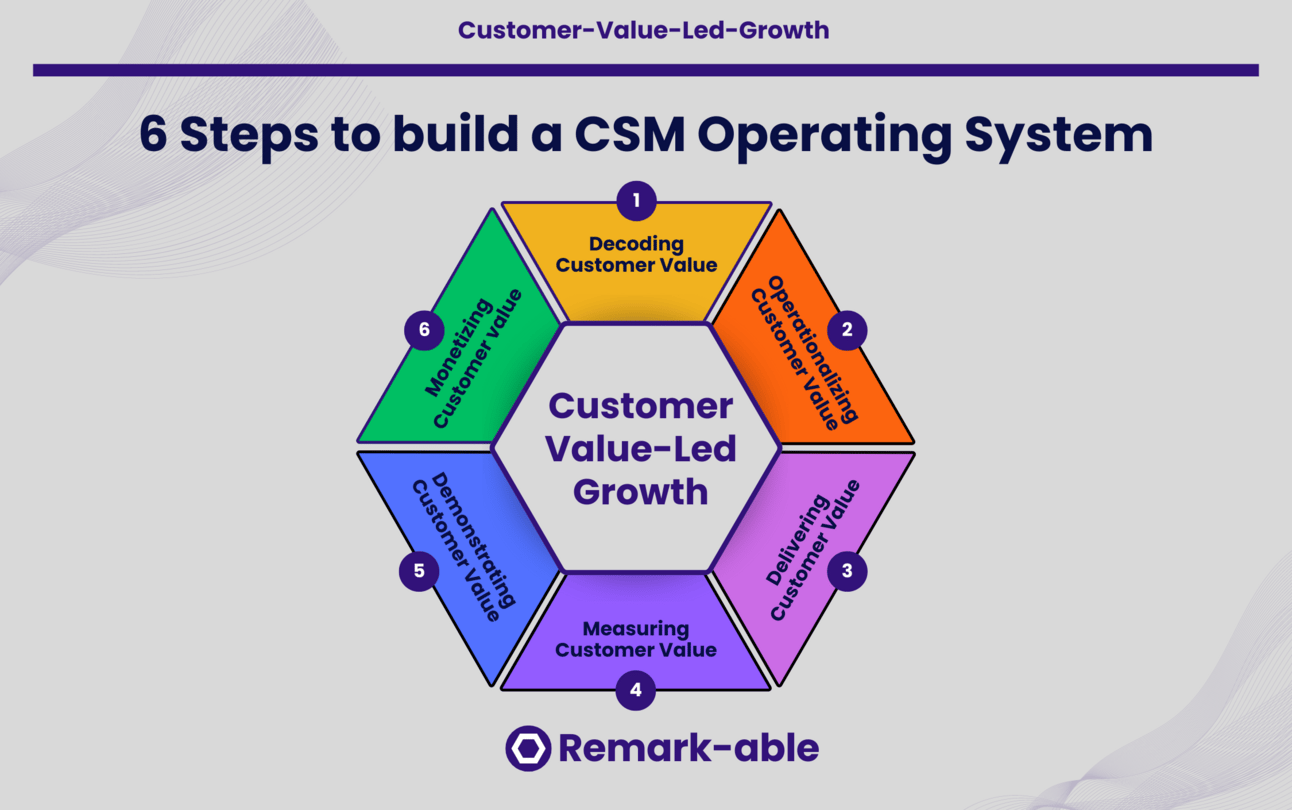
1. Decoding Customer Value
Every systematic approach worth its salt starts with a thorough analysis. You need to understand
Your customers goals and how they are measured
The associated personal value aka what’s at stake for your customers
What keeps your customers from getting there
In theory, you could “outsource” all of it to your colleagues from sales. After all they are doing the customer discovery.
But even the most qualified sales reps will fail at the last point. Because it’s not enough to understand the customer problem on a surface level.
You need to know why the problem exists in greater detail (root causes) to help them solve them.
If customers don’t know how what goals they want to pursue and how they should best measure it they require the help of an expert aka you.
The sales handoff is not the end-product of the customer discovery. It’s the input for starting yours.
2. Operationalizing Customer Value
Ok, you’ve discovered that your customers
want to decrease employee turnover from 33% to 20% annually
the main cause for the high turnover is a bad work-life balance
they don’t know how to set proper countermeasures
Now you have an easy time to help them solve their problem. Right? A rhetorical question, of course.
In the next step you need to break down these challenges into smaller pieces. You need to operationalize how customers can solve this problem and achieve their goals.
This is the purpose of a Customer Success Plan. It outlines all the (small) steps customers need to take to close the gap.
A dedicated Success Plan contains
Main goal and how it is measured
(Main) problem description
Milestones to achieve
Partial problems
Tasks to solve
Skills & Knowledge required
Education and training required
3. Delivering Customer Value
Too many CSM teams rely on content and services that might help customers. Too few of them are specifically designed to help customers move forward.
Webinars, training sessions, guides, tutorials, etc. - they all must be built to help customers complete a task or solve a problem. General education content needs to move from post- to pre-sales stages.
The main ingredient to build effective CS programs is subject expertise. There are 4 ways to acquire it
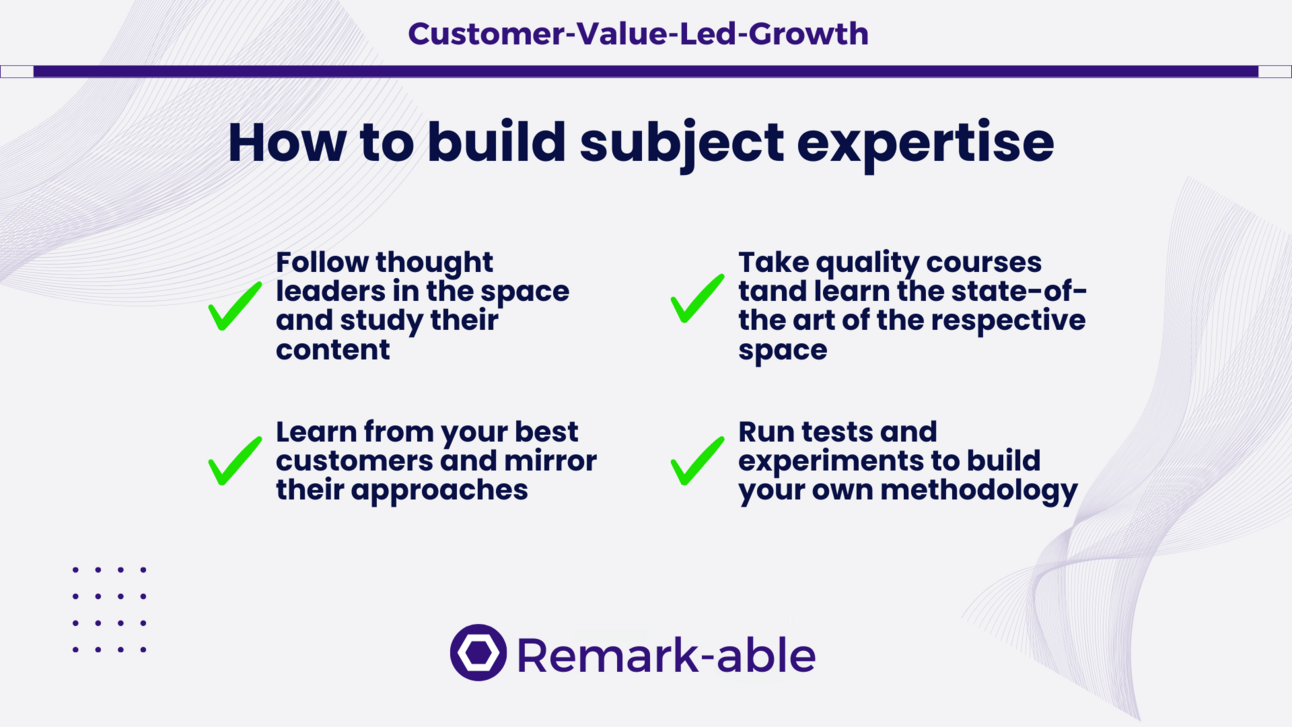
Put a strong emphasizis on the opening stage aka customer onboarding. Your first goal is to minimize the time to value.
Because you require buy-in for the long term from your customers to properly educate and train them. They will only commit after a quick and easy proof of value.
4. Measuring Customer Value
I’m not here to ruffle feathers but to break up closed mindsets. Monitoring product usage and customer health scores are not correlated to customer value.
At least not as high as it would be necessary. Sure, if customers are not using the product they don’t get any value. But above the “minimum viable usage” everything is guesswork.
The most accurate way to measure customer value is to track progress. Progress towards their stated goals based on their defined metrics.
If your customers’ goal is to grow their revenue by 30% YoY and they haven’t seen any uptick after 3 months its problematic.
While it’s unrealistic that their growth comes equally divided by 2.5% each month there should be some movement.
Following this approach you will be able to find out when things are going south early enough to start countermeasures in time.
5. Demonstrating Value
If you don’t understand what value means for your customers you will always fail to demonstrate it effectively.
Nothing worse when you are meeting with customers highlighting their accomplishments only to find out: They don’t care about what you are talking about.
Demonstrating value to your customers has 2 components - business and personal value (as outlined in the beginning of this post).
There’s no limit to how often you are showing your customers why they should never stop working with you.
The most obvious opportunity to do it are your QBRs. Or how I like to think about them - Customer Value Reviews.
Start them by benchmarking your customers actual results with the projected ones (either way). If they have been falling behind you need to find out why and fix the situation.
If they are right on track to achieve/overachieve their goals you can double down on their personal value. Ask them how their life at work has changed due to these results.
6. Monetizing Customer Value
Many CSMs feel intimidated by “commercial responsibility” It’s not a surprise because they have been indoctrinated that it’s a bad thing for a decade.
But I’ve got great news for you. Selling as a CSM does not destroy your customer relationships.
You don’t have to be “pushy” or “sleazy” unless you choose to. Or work for jerks who forcing you to be.
The truth is that selling to your existing customers does not work if you did not deliver value first. What you are doing is essentially capturing demand.
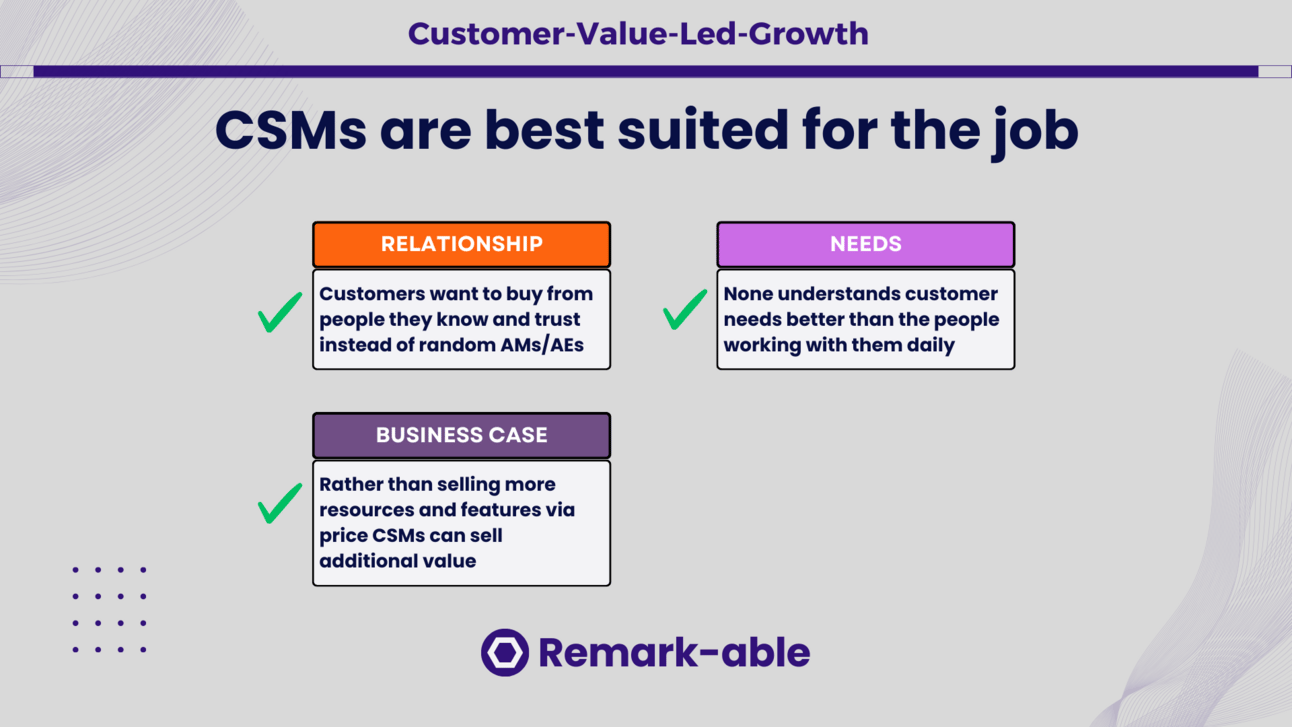
As you are the driving force behind your customers’ success it’s only logical that deserve rewards.
Yes, renewals, expansions, up- and cross-sells are rewards for your great work.
While renewals should happen seamlessly, getting your customers to buy more requires some additional effort.
Leverage you knowledge about your customer to identify untapped growth opportunities.
More problems to solve
More valuable problems to solve
More users/teams
Create scenarios about how your customers can further grow their value and connect it with additional purchases of resources, features or products.
Want to learn more about how to build the Customer Success Management Operating System?
Subscribe to the Content Library or
Join the upcoming cohort of my Course (5 days left to join)
